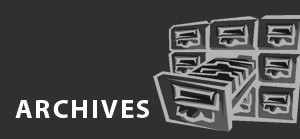project H:Validation
SURVEY
We have created a online questionnaire. With the gathered information we try to improve the communication and cooperation with our validators.
Survey: http://questionpro.com/t/AHYO7ZLxYL
VALIDATORS
STUDENTS BK: Wouter Kroon, Ifigenia Dimitrakou, Vladimir Ondejcik , Terry Pater
RESIDENTS STUDENT DWELLING: Ramon Rodrigo
ARCHITECTS: Spiros Papadimitriou (Spiros ip architecture,Thessaloniki)
PROFESSIONALS: Ben Bisseling
PhD RESEARCHER: Sina Mostafavi
CONSULTANTS
FABRICATION + SUSTAINABILITY: Neelabh Gupta (M.Sc.SET)
MATERIAL SCIENCES: Getting in touch with material manufacturers, in which we are interested in.
TECHNICAL SCIENCES: TNO is an independent research organisation whose expertise and research make an important contribution to the competitiveness of companies and organisations, to the economy and to the quality of society as a whole.
INTERACTIVE SCIENCES: Studio Roosegaarde creates interactive artworks that explore the dynamic relation between space, people, and technology. As laboratory for interactive projects, the studio develops its own technology and design and is internationally known for interactive artworks such as Dune and Sustainable Dance Floor.
DETAILED VALIDATION REPORT
Dimitris Gourdoukis
Washington University (USA)/ARISTOTLE UNIVERSITY THESSALONIKI(GREECE)
Architect/ Tutor
Website: http://object-e.net/
Component
The component’s exploration is well justified and it looks like the finally selected component is the most promising one. Maybe the most important property of the selected component is its ability to transform independently in two directions (i.e. transformation in one direction does not force a transformation in the second). That property might become both an advantage and a disadvantage. On the side of the disadvantages, having the two directions totally independent can cause the structure as a whole to appear like it performs in a random or not synchronized way. Therefore it might be useful to introduce a certain degree of dependency between the two actuators. Not a one-to-one relation – that would cancel the possible advantages of the independent movement – but maybe a more subtle connection, or even one that gets activated after certain conditions are met (for example transformation in one direction affects the transformation in the other only when it is expanded over 50%). At the same time that independency is something you should explore as to the opportunities that it might offer. For example, maybe not all the components have the same degree of expansion in the ‘free’ direction, something that can create a much larger differentiation in the depth of the surface which can increase the visual quality of the result and at the same time accommodate different needs at different points of the surface (either programmatic or structural). However, that process might be going against the modularity of the component, therefore an intermediate solution must be found.
Material
Since the component is made out of rigid parts, several materials can be appropriate for a larger scale. Two things that should be considered in relation to the material are: (a) The weight. The lighter the material, the better, therefore some king of plastic might be appropriate, or even some kind of thick chipboard. (b) How easy is to attach on the material the actuators and the connections. Wood of chipboard might be best for that since it is easier to work with.
Connections
Resolving the connections between the components is maybe the most important part to work on at this stage of the development. How the connectors will be and how they will perform might affect even the shape of the component itself, therefore it is something that has to be solved before moving forward.
Documentation:
The documentation of the project so far is quite elaborate. One thing that might be useful in order to better illustrate the properties of the project, but also in order to study what happens when the component aggregates, is animations. Either computer animations, or ‘stop-frames’. However, given the complexity of the project, a computer animation might be more appropriate and accurate.
Print media
Fabrication - the designer's guide From
Media House Project (IAAC)
Form Defining Strategies
Making Things Move
From Control to Design:Parametric/Algorithmic Architecture
Pamphlet Architecture 27: Tooling
Online media
http://www.studioroosegaarde.net
generative- forums-links
Generator X http://www.generatorx.no/
Tropolism http://www.tropolism.com/
SuckerPunch http://www.suckerpunchdaily.com/
Office dA http://www.officeda.com/




